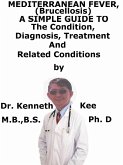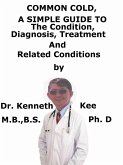I was watching the old TV series Little House on the Prairie when I came across a few instances when Scarlet Fever causes blindness in the infected person (including the writer's sister Mary Ingalls) even several years after the original illness.
This was proven wrong as Scarlet Fever does not cause blindness but optic neuritis from meningoencephalitis does according to an investigative doctor.
I have never seen a case of Scarlet Fever with its strawberry tongue and rashes and of course fever in my years of practicing medicine.
The story sparked my interest about the disease.
Apparently Scarlet Fever is a frequent disease which killed thousands during the 19th century and is making a comeback like measles.
After decades of decline, England has had an unprecedented increase in the infectious illness since 2014.
A new study found cases there have reached a 50-year high, with 620 outbreaks totaling over 19,000 cases of scarlet fever reported in England in 2016.
Several countries in East Asia have also reported a surge in cases, such as Vietnam, China, South Korea, in the past five years.
Scarlet Fever (also known as scarlatina) is an acute febrile infectious disease of the upper respiratory tract caused by the erythrogenic toxin linked with the bacillus Group A Streptococcus (GAS) that is found on the skin and throat.
It is featured by a bright red rash on the body, normally followed by a high fever and sore throat.
The same bacteria that cause strep throat also produce scarlet fever.
Scarlet fever mainly involves children between the ages of 5 and 15 years.
It used to be a serious childhood illness, but it is often less dangerous today.
Antibiotic treatments used early on in the illness have helped speed recovery and decrease the severity of the symptoms.
Scarlet fever is caused by group A Streptococcus, or Streptococcus pyogenes bacteria, which are bacteria that can live in the mouth and nasal passages.
These bacteria can produce a toxin, or poison, that causes the bright red rash on the body.
The infection can spread two to five days before a person feels ill and may be spread through contact with droplets from an infected person's saliva, nasal secretions, sneeze, or cough.
This suggests that any person can contract scarlet fever if they come into direct touch with these infected droplets and then contact their own mouth, nose, or eyes.
The patient may also get scarlet fever if he or she drinks from the same glass or eat off of the same utensils as a person with the infection.
Symptoms start off with:
1. Sudden onset of headache
2. High fever 39-40 degrees centigrade
3. Chills and rigors
4. Sore throat (infected tonsils)
5. Vomiting
6. Cervical lymphadenopathy
Subsequent symptoms follow:
1. Punctate erythrematous rash appears 12 to 24 hours later after the fever, starting from the neck and chest and then spreads rapidly.
The face is normally not affected.
2. There is facial flushing and a pale area around the mouth
3. Dark red lines appear along the skin creases (Pastia's lines)
4. Rash blanches when pressed
5. Tongue is covered with white fur with occasional red papillae (white strawberry tongue)
The white fur sheds on the third day and the tongue turns red by the fourth day (red strawberry tongue)
Diagnosis is mainly clinical.
These days a culture and sensitivity test is done from the throat swab
Antibiotics (penicillin or amoxillin) of 10 day course are used in the treatment of Scarlet Fever, together with fever medicine, bed rest, fluids and itch medicines.
For patients that have an allergy to penicillin, some alternative antibiotics such as erythromycin could be offered instead.
TABLE OF CONTENT
Introduction
Chapter 1 Scarlet Fever
Chapter 2 Causes...
Dieser Download kann aus rechtlichen Gründen nur mit Rechnungsadresse in A, B, CY, CZ, D, DK, EW, E, FIN, F, GR, H, IRL, I, LT, L, LR, M, NL, PL, P, R, S, SLO, SK ausgeliefert werden.









